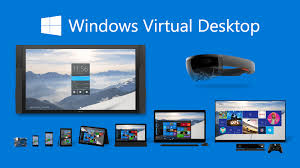In today’s world, the health and wellness industry has seen an unprecedented surge, particularly in the area of weight loss. Millions of people are looking for effective ways to lose weight, improve their fitness, and maintain a healthy lifestyle. For businesses in the weight loss industry, a well-curated weight loss email list offers a direct line to potential customers interested in products, services, and information related to weight management.
Whether you’re promoting dietary supplements, fitness programs, weight loss coaching, or meal plans, an email list tailored to individuals who are actively seeking weight loss solutions can significantly enhance your marketing success. In this article, we’ll explore the importance of a weight loss email list, how to build one, and strategies to effectively utilize this list to drive results.
What is a Weight Loss Email List?
A weight loss email list is a collection of email addresses and contact information of individuals interested in or seeking solutions for weight loss. This list can be segmented based on various criteria such as age, gender, weight loss goals, location, or preferences for specific weight loss programs or products. The list may include people looking for weight loss tips, dietary supplements, fitness plans, or other health-related services.
Businesses and marketers use this list to send targeted promotional messages, newsletters, special offers, and other content that is relevant to the weight loss journey of their subscribers. With a well-segmented list, marketers can ensure that their messages resonate with the specific needs and goals of each recipient, leading to higher engagement rates and conversions.
Importance of a Weight Loss Email List
The weight loss industry is incredibly competitive, with a plethora of brands, products, and programs vying for attention. Having access to a weight loss email list allows businesses to target individuals who have already shown an interest in improving their health and losing weight. This level of focus can dramatically improve marketing performance, offering several key benefits:
1. Highly Targeted Audience
A weight loss email list ensures that your messages are reaching people who are actively looking for weight loss solutions. This allows you to focus your marketing efforts on a receptive audience rather than casting a wide net. Instead of wasting time and resources on broad, untargeted campaigns, you can send messages directly to individuals with a genuine interest in weight management products and services.
For instance, if you offer a weight loss meal plan, your email list could include people who have already expressed interest in nutrition-based weight loss solutions, leading to a higher likelihood of engagement.
2. Increased Engagement and Conversion Rates
Because your audience is already interested in weight loss, they are more likely to engage with your emails, whether it’s opening them, clicking on links, or taking advantage of the offers you provide. Higher engagement rates translate into more conversions, whether you’re promoting a product, service, or informational resource.
An email list gives you the opportunity to build a relationship with your subscribers over time by offering value in the form of tips, motivational content, or exclusive deals.
3. Personalized Marketing
With a well-segmented weight loss email list, you can send personalized messages to different segments of your audience. For example, you could segment your list by gender, age, or specific weight loss goals, and send customized messages that speak directly to the recipient’s unique needs.
By sending personalized offers, workout plans, or dietary recommendations, you make the recipient feel valued and understood, which significantly increases the chances of conversion.
4. Cost-Effective Marketing Strategy
Compared to other forms of marketing, such as paid ads or social media campaigns, email marketing is a cost-effective way to reach a large audience. With a weight loss email list, you can send out promotional campaigns, newsletters, or product launches at a fraction of the cost of traditional advertising.
Email marketing also offers an impressive return on investment (ROI). According to research, email marketing can provide up to a 38:1 ROI, making it one of the most effective channels for businesses in the weight loss industry.
5. Building Customer Loyalty and Trust
A regular, well-constructed email campaign helps build trust with your audience. Sending informative content such as weight loss tips, success stories, or nutritional advice establishes your business as an authority in the health and wellness space. As your audience begins to trust your expertise, they are more likely to purchase your products or sign up for your services.
By consistently providing valuable information, you can foster long-term relationships with your subscribers, leading to repeat customers and strong brand loyalty.
How to Build a Weight Loss Email List
Building a high-quality weight loss email list takes time, effort, and strategy. Below are some proven methods to help you grow and maintain an effective email list:
1. Offer Free Resources or Incentives
One of the most effective ways to encourage people to join your email list is by offering something of value in return for their contact information. This could be a free eBook on weight loss tips, a discount on your products, or a free meal plan. When you provide something useful that addresses their pain points, people are more likely to subscribe.
For instance, you could offer a “7-Day Weight Loss Guide” that provides practical advice on starting a weight loss journey, with the only requirement being that visitors sign up with their email address to receive it.
2. Create Sign-Up Forms on Your Website
Make it easy for visitors to your website to subscribe to your email list by prominently displaying sign-up forms. These forms should be placed on key pages, such as your homepage, blog posts, or product pages. Ensure the sign-up process is simple, requiring minimal information, such as a name and email address.
Additionally, you can use pop-ups or banners that encourage visitors to subscribe for exclusive content, weight loss tips, or special offers.
3. Leverage Social Media Platforms
Social media is a powerful tool for promoting your weight loss email list. Use platforms like Instagram, Facebook, and Pinterest to showcase your products, share success stories, and provide useful tips related to weight loss. Include a call to action (CTA) in your posts that directs followers to sign up for your email list to receive exclusive content or special discounts.
Social media giveaways, contests, or challenges are also effective ways to attract subscribers. You can offer a prize in exchange for email sign-ups, with participants needing to join your email list to enter.
4. Collaborate with Influencers or Bloggers
Partnering with influencers or bloggers who have an established following in the health and fitness space can help you grow your email list. Influencers often have a dedicated and engaged audience, making them an ideal channel for promoting your products or services. Collaborating on giveaways, guest posts, or co-branded content can encourage their audience to join your email list.
5. Create Landing Pages for Special Offers
A dedicated landing page focused on a specific offer or campaign is a great way to drive sign-ups. For example, you could create a landing page offering a “Free 30-Day Weight Loss Challenge” where visitors must provide their email address to access the challenge. By promoting this landing page through social media, paid ads, or blog posts, you can attract a larger audience to your email list.
How to Use Your Weight Loss Email List Effectively
Once you’ve built a high-quality weight loss email list, it’s important to use it strategically to drive engagement and conversions. Here are some ways to maximize the effectiveness of your list:
1. Segment Your List for Targeted Campaigns
Segmenting your email list allows you to send highly relevant messages to different groups of subscribers. For example, you can segment your audience by gender, age, or specific weight loss goals and create targeted campaigns based on their unique needs.
For instance, women in their 30s may respond better to emails about weight loss through fitness programs, while an older demographic may be more interested in nutritional supplements.
2. Send Regular Newsletters
Sending regular newsletters keeps your audience engaged with your brand. You can include weight loss tips, healthy recipes, workout routines, or success stories to provide value to your subscribers. This not only helps build trust but also keeps your brand top of mind.
Your newsletter should also include a clear CTA, such as a link to purchase a product, sign up for a program, or follow your social media accounts.
3. Create Drip Campaigns
A drip campaign is a series of automated emails that are sent out based on specific triggers, such as signing up for a newsletter or making a purchase. For example, after someone signs up for your weight loss guide, you could follow up with a series of emails providing additional tips, product recommendations, or testimonials.
Drip campaigns help nurture leads and guide them through the customer journey, increasing the chances of conversion.
4. Offer Exclusive Discounts and Promotions
Offering time-sensitive discounts or promotions to your email subscribers can create a sense of urgency and encourage them to make a purchase. Whether you’re promoting a new product, a weight loss program, or a seasonal sale, exclusive deals make your subscribers feel valued and increase their likelihood of taking action.
5. Analyze and Optimize Your Campaigns
Regularly analyzing the performance of your email campaigns is essential for improving future results. Track key metrics such as open rates, click-through rates, and conversions to see what resonates with your audience. A/B testing different subject lines, content, and CTAs can help you optimize your campaigns for better performance.
Conclusion
A weight loss email list is a powerful tool for businesses in the health and wellness industry. By targeting individuals who are actively seeking weight loss solutions, you can create personalized and highly effective email campaigns that drive engagement, build trust, and increase conversions.
Whether you’re promoting weight loss supplements, fitness programs, or nutritional plans, a well-segmented and maintained email list ensures that your marketing messages reach the right audience. With the right strategies in place, your weight loss email list can become a key driver of growth and success for your business.



